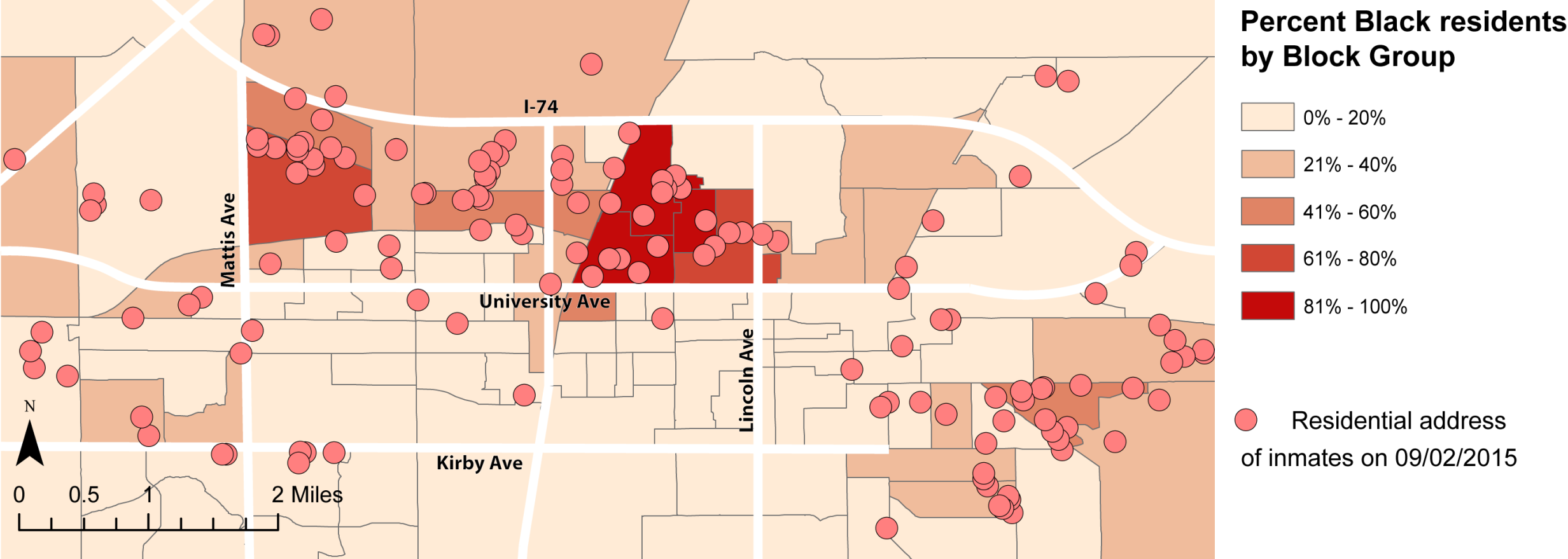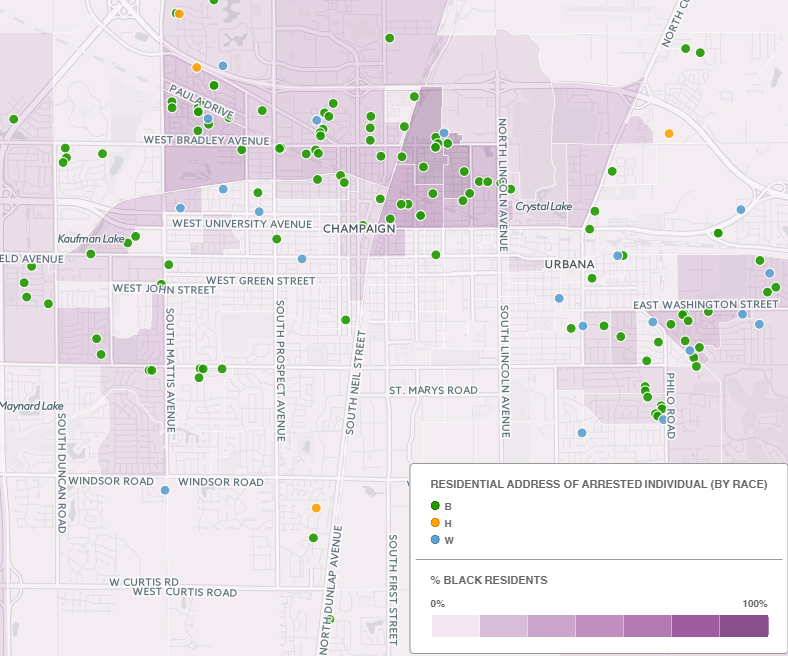It breaks my heart that we are still arguing this point as a community, but the recent opinion piece by Dennis Kimme — whose consulting company was recently hired by Champaign County, and recommended a $32 million expansion of our current jail system — demands a response because of its unabashed distortion of facts. Kimme presents the following arguments in his claim that the disparity in jail population is not an indication of racial disparity in our criminal justice system:
“We need a ‘Gender Justice Task Force’ because males are incarcerated at a per-capita rate 8.9 times greater than females, a huge statistical disparity that would on its face prove a huge injustice.”
I won’t argue with this one. We indeed do need a gender justice task force, not only locally but nationally — the U.S. ranks worse than Rwanda and Nicaragua in the Global Gender Gap Index. But the gender imbalance in jail populations across the country is directly tied to this inequity (reflecting the coercion of women into a passive role, rendered invisible in a male-dominated public sphere), and is NOT an indication of a systemic injustice to males.
“The system is extremely unjust to whites per the disparity=injustice standard because whites are incarcerated at a per-capita rate 8.4 times greater than Asian-Americans.”
A quick look at the racial distribution of residents is enough to show that the large majority of Asian residents in Champaign is concentrated on or around Campus. So straw-man arguments aside, this disparity between arrests of Whites and Asians in Champaign actually points to an issue that Build Programs Not Jails has highlighted before: while campus and its surroundings arguably have one of the highest crime rates in the city (the campus area accounts for 65% of police calls in the South District, while the UofI Police took more cash forfeitures as a result of drug operations in 2014 than the Champaign and Urbana Police Departments combined), black-majority neighborhoods are frequently vilified as crime hot beds, a sentiment that is reflected on police patrolling patterns in the C-U area.

“Blacks have a per-capita incarceration rate for Class X and first-degree felonies 24 times greater than that of the non-black population,” and this explains racial disparities in the jail population since these crimes “generate disparately longer pretrial jail stays than lesser crimes”
That is precisely the issue. Justifying the overlarge presence of African Americans in our jail system based on a higher rate of arrests for that race is like justifying the higher rates of poverty among women based on lower income for that gender. There is a difference between explaining and justifying. The difference in incarceration rates is not due to a higher inclination of African Americans towards crime, but to a drastic difference in structural opportunities and institutional policy implications for Blacks and Whites in our community. And this inequality starts early:
As of 2014, 40% of children in poverty in Champaign County were Black, despite Blacks representing less than 13% of the County’s population (American Community Survey). Black children are in fact over 5 times as likely to grow up in poverty as White children in this county. And our institutions work to perpetrate this inequity, from schools to detention centers. While 75% of all suspensions in Champaign District 4 schools (2012-2015) and 65.8% of all suspensions in Urbana District 116 schools (2011-2015) were Black students, County Juvenile Detention Center monthly reports show that 71% of those admitted to the Center between January and April of this year were Black.
Regarding rates of arrests specifically, a series of studies illuminate how African Americans are directly targeted by our Police Departments. A 2012 report from ViveloHoy cited by The Atlantic found that from 2007-2011, 88% and 91% of jaywalking arrests in Champaign and Urbana, respectively, were of Black people. Meanwhile, Urbana’s IDOT report found that “a disproportionately large number of traffic stops are made of African-American drivers in our community,” concluding that “this disparity is mostly due to differences in policing tactics.”
“Blacks represent only 13.1 percent of the national population, yet are 39.8 percent of all benefit recipients,” yet this doesn’t prove a need for a “Welfare Justice Task Force”
I agree that these numbers are egregious but, without getting into the merits of our welfare system, there is an important distinction to be made here. The overrepresentation of African Americans in any system that targets the poor and disempowered (our criminal justice and welfare systems being prime examples) is indeed an indication of racial injustice. A different situation altogether would be if Blacks were overrepresented in the ranks of private CEOs (there are only six Black CEOs in Fortune 500 companies), homeownership (42% of Blacks own their own homes, versus 72% of whites), or stock ownership (in 2013, 30% of blacks owned stock versus 46% of whites).
———
The point here is not to argue that a single statistic is enough to “prove” there is systemic injustice. Kimme is right that if that were the case, ours would be a very shallow argument, indeed. But as anyone that attended the County Board meeting last Tuesday knows, the 13 speakers from the public that night put forward a long list of arguments and personal accounts laying bare the need for a critical look into the endemic injustice in our society and institutions. The disparities in the jail population is but the very tip of the iceberg.
And we’re not alone in saying this. There is a whole body of academic research that calls attention to the unjust, systematic, mass incarceration of black people. To mention a single one, the Vera Institute of Justice published a report earlier this year that leaves little doubt as to the existence of a problem. Through a national-scale analysis of jail policies and populations, the report concludes that “jails have become massive warehouses primarily for those too poor to post even low bail or too sick for existing community resources to manage.” The question is not whether there is systemic injustice, but rather, what are the forces and interests that engender it, and what we, as a community, can do about it.
Arguments like the ones put forward by Kimme attempt to banalize and simplify a complex issue, foreclosing the possibility of a deeper discussion. Instead, by creating a Racial Justice Task Force, we want to open up a broader conversation on the links between racial disparities and deeper forms of systemic or structural racism in order to make our local criminal justice system work better for all.
The County Board vote on establishing a Racial Justice Task Force will take place tonight, at 6:30pm, at the Brookens Admin Building (1776 E. Washington St., Urbana, IL).
Alex is a member of the local Build Programs Not Jails movement as well as an activist student group called Planners Network.








